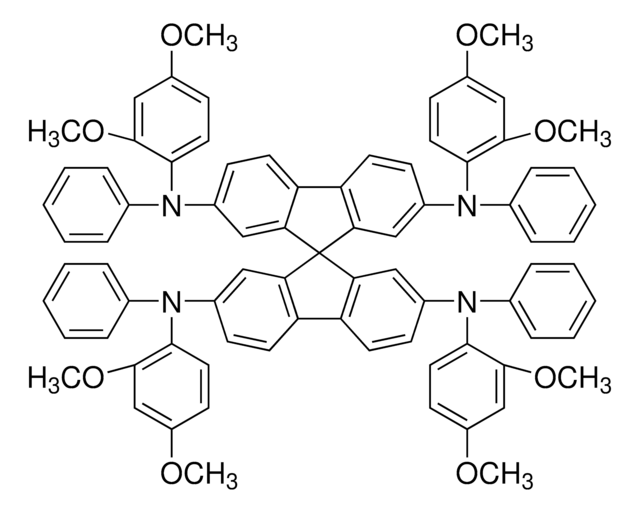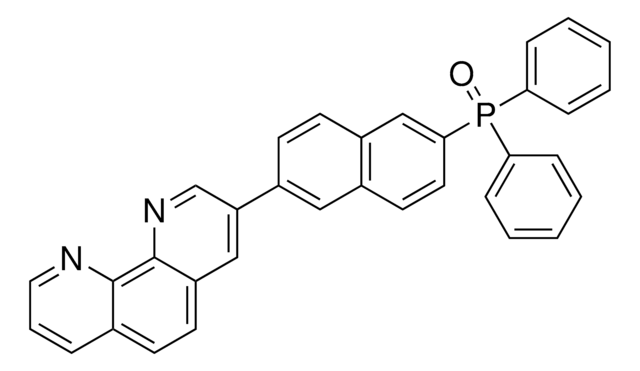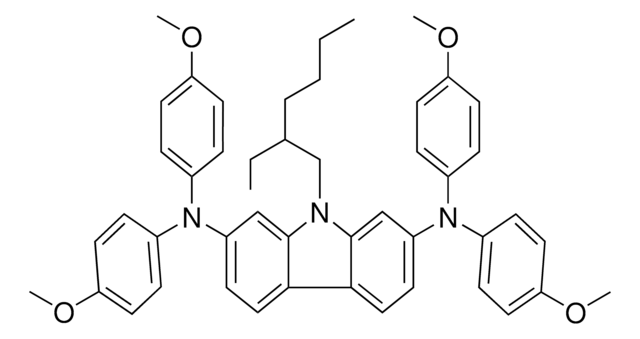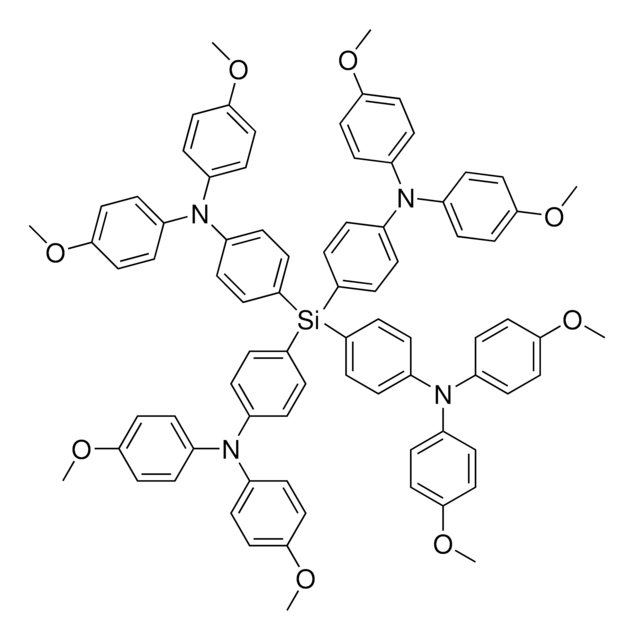904899
Spiro[9H-fluorene-9,9′-[9H]xanthene]-2,7-diamine
Synonyme(s) :
N,N,N′,N′-tetrakis(4-methoxyphenyl)spiro[fluorene-9,9′-xanthene]-2,7-diamine, X59
About This Item
Produits recommandés
Description
Band gap: Eg = 3.05 eV (lit)
Hole Mobility: 5.5 x 10-5 cm2/Vs (lit)
Essai
≥98%
Forme
powder
Couleur
yellow
Conductivité
1.9 x 10-4 S/cm (lit)
Énergie orbitale
HOMO -5.15 eV
LUMO -2.10 eV
Chaîne SMILES
N(c%10ccc(cc%10)OC)(c9ccc(cc9)OC)c1cc2c(cc1)c3c(cc(cc3)N(c8ccc(cc8)OC)c7ccc(cc7)OC)C42c5c(cccc5)Oc6c4cccc6
Clé InChI
PDGJIZDXBRVKBB-UHFFFAOYSA-N
Description générale
Application
Code de la classe de stockage
11 - Combustible Solids
Classe de danger pour l'eau (WGK)
WGK 3
Point d'éclair (°F)
Not applicable
Point d'éclair (°C)
Not applicable
Faites votre choix parmi les versions les plus récentes :
Certificats d'analyse (COA)
It looks like we've run into a problem, but you can still download Certificates of Analysis from our Documents section.
Si vous avez besoin d'assistance, veuillez contacter Service Clients
Déjà en possession de ce produit ?
Retrouvez la documentation relative aux produits que vous avez récemment achetés dans la Bibliothèque de documents.
Articles
Professor Chen (Nankai University, China) and his team explain the strategies behind their recent record-breaking organic solar cells, reaching a power conversion efficiency of 17.3%.
Notre équipe de scientifiques dispose d'une expérience dans tous les secteurs de la recherche, notamment en sciences de la vie, science des matériaux, synthèse chimique, chromatographie, analyse et dans de nombreux autres domaines..
Contacter notre Service technique

![Spiro[9H-fluorene-9,9′-[9H]xanthene]-2,2′,7,7′-tetramine](/deepweb/assets/sigmaaldrich/product/structures/225/593/3b5858b3-0993-43eb-97ee-3f0d2a1142dc/640/3b5858b3-0993-43eb-97ee-3f0d2a1142dc.png)


![Poly[bis(4-phenyl)(2,4,6-trimethylphenyl)amine]](/deepweb/assets/sigmaaldrich/product/structures/288/293/16f2da62-4f58-4b77-926a-5bf2a96e0ad8/640/16f2da62-4f58-4b77-926a-5bf2a96e0ad8.png)


